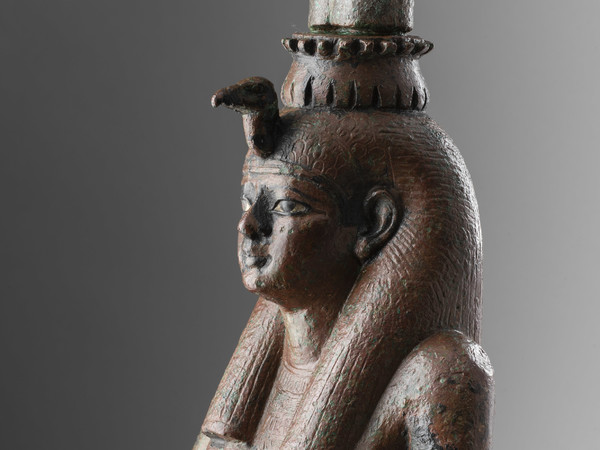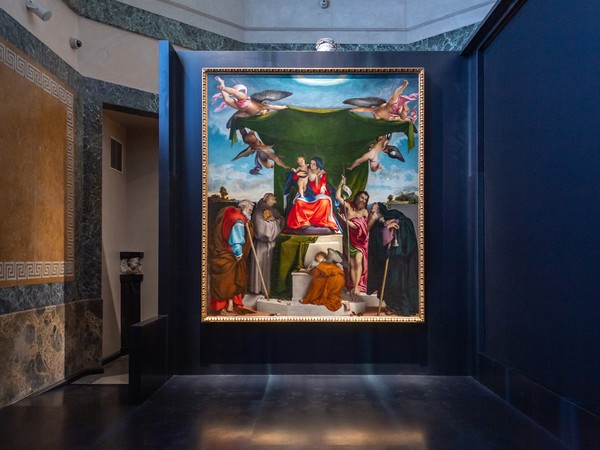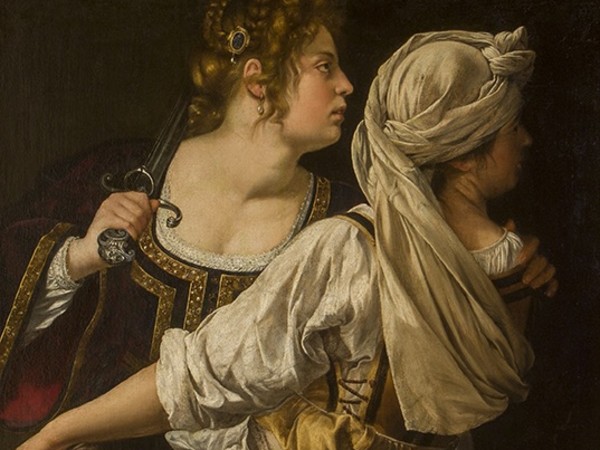Bronzetto of the goddess Isis Lactans (detail), late era (664–332 BC) or next, unknown origin, bronze, cat.
For the first time, Sicily will organize the finds of the collections of the Egyptian museum of Turin, which in 2024 four hundred years since birth.
From April 13 to October 26, more than three thousand years of history along the banks of the Nile Will Echo in the Cathedral Museum – Palazzo Garofalo will be thanks to the exhibition “The Egyptians and the gifts of the Nile”A dive between life, art, the religion of the old civilization, through the exhibition of 24 works from Turin and the participation of all Sicilian museums that organize Egyptian works, such as the “Corrado Basile” Papyrus Museum in Syracuse, the National Archeological Museum Antonio Salinas of Palermo.
Produced and organized by the Municipality of Ragusa and by Arthemisia, in partnership with the Federico II Foundation, curated for the Egyptian Museum by Paolo Marini, the exhibition will guide visitors from the Preinastic era (3900−3300 BC) to the Greek-Roman age (332 AC –395 AD) Between Steles, Vessels, Papyrus and Amulets, AS well as a funeral mask in a funeral mask in cardboard.
Urny Deir El-Medina (?), New Kingdom, Late XVIII-early XIX dynasty, (1353–1279 BC), Wood, Painting Cat.
“The Egyptian Museum – Declares The Curator of the Egyptian and Exhibition Museum, Paolo Marini – Brings to Sicily An Exhibition and A Millennial Story Told by Original find that, Dynasty After Dynasty, Lead Visitors From The 4th Millennium, Whemtennium Walls Tell the Activity that Tok Place Along The Nile, and End With A Funeral Mask In Cartonnage, an emblem of that country, now conquered by the Romans, still holds on to the customs of Egypt Faron and all the same copy. Stories to tell.
A boot model of the funeral equipment of the first interim period (2118 – 1980 BC), beaten and painted wood, decorated with a few Udjat -eyes to protect the hull, represents the journey from the deceased to the holy city of Abido. The complete set of Canopi in Ptahhotep Alabaster -Vases, lived during the third interim period (1076 – 722 BC), comes from the gallery of the material culture of the Egyptian museum, instead supports four vases that are used to depict the organs of the deceased, concluded by Zoomorfic Covers.

Amulet of the Royal Child, New Kingdom (1539-1077 AC) Gold, cat.
“Since a few years – says Iole Siena, president of Arthemisia – we have carried out a wonderful project to improve the Italian areas that are less known to the public of art exhibitions; It is a project that is very close to my heart, both because I believe that the excellence of our country lives exactly in those centers that are only geographically smaller, and for a strong ethical feeling that encourages me to make the art and great exhibitions available to everyone. The art exhibitions inevitably also bring a tourist and economic development, and this of even more useful for all the work we do. Ragusa represents the beating heart of this project, and I am very happy to participate in this “first time”, also in view of my personal and very narrow emotional bond with Sicily.
Finally, a focus will be spent on the figures of Johann Joachim Winckelmann – founder of Neoclassicism and one of the first to treat Egyptian art in a scientific context – and Jean -François Champollion – deciper of the Hierogyphics that the visitor’s visitor back.
#ancient #Egyptians #conquer #Ragusa #Ragusa





